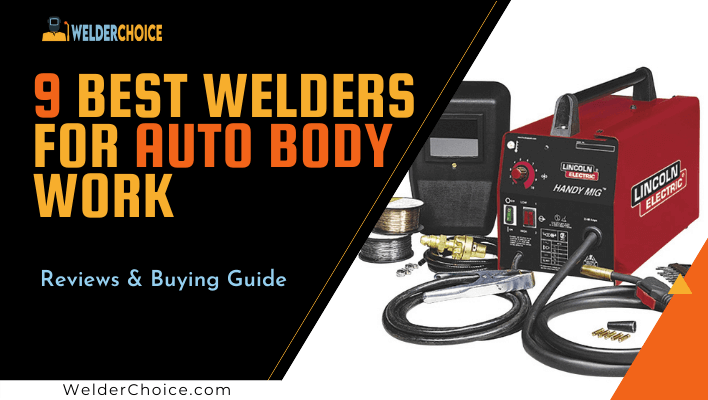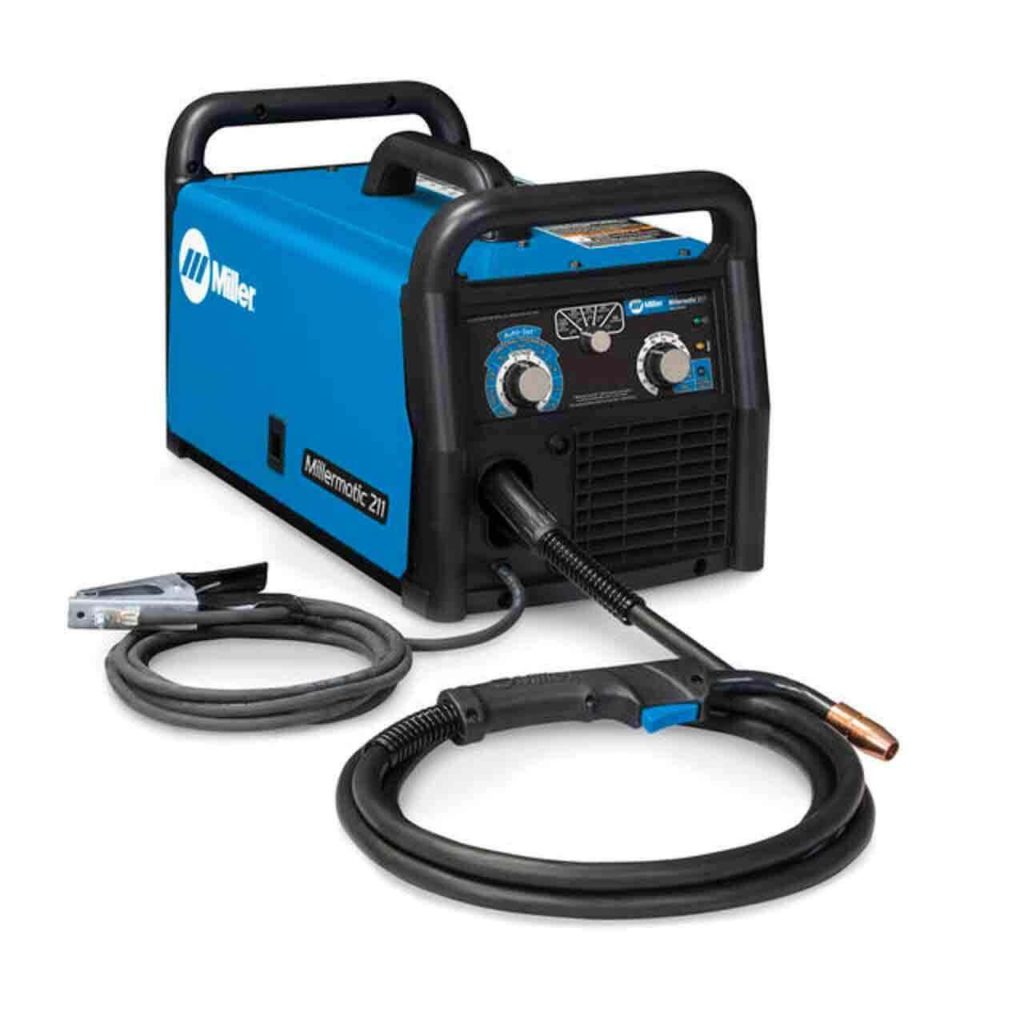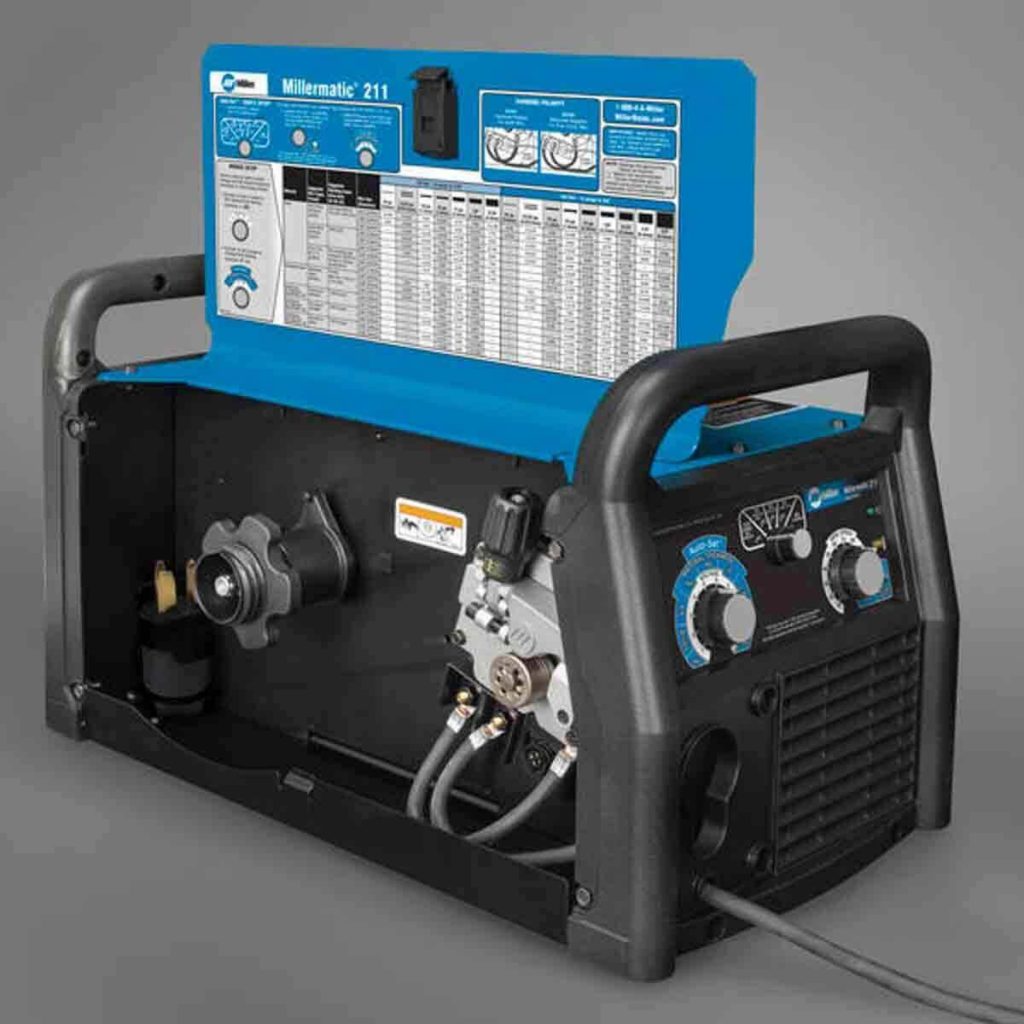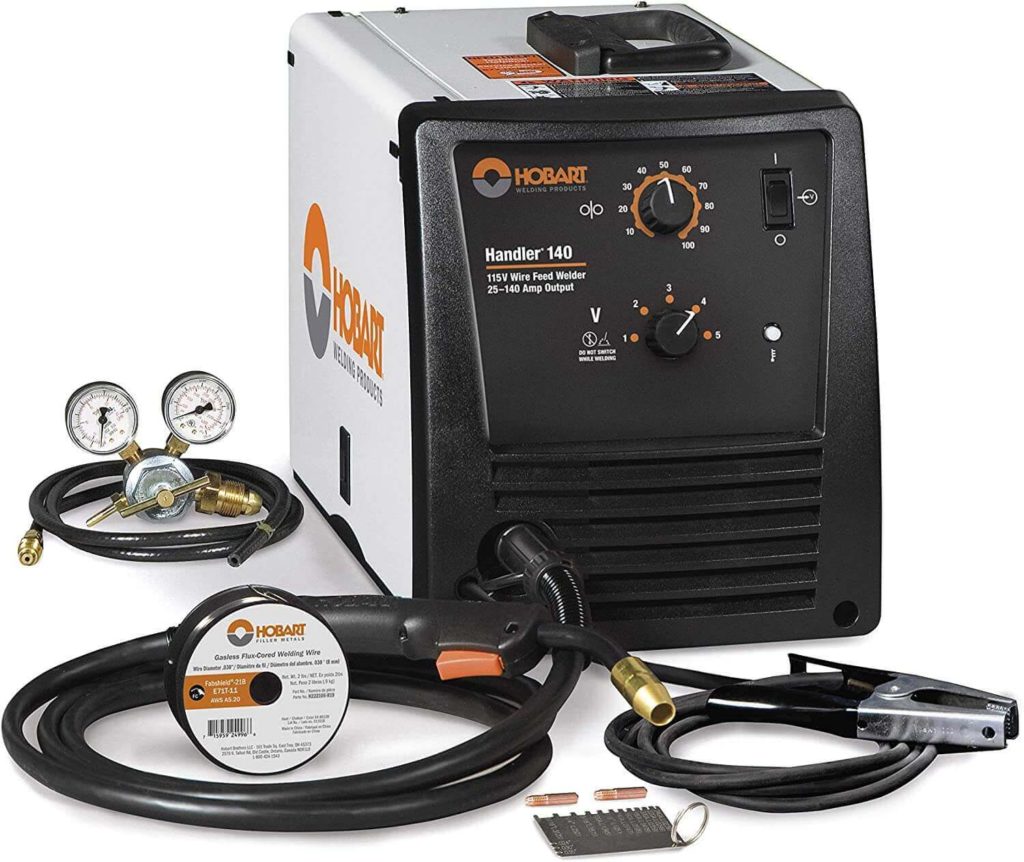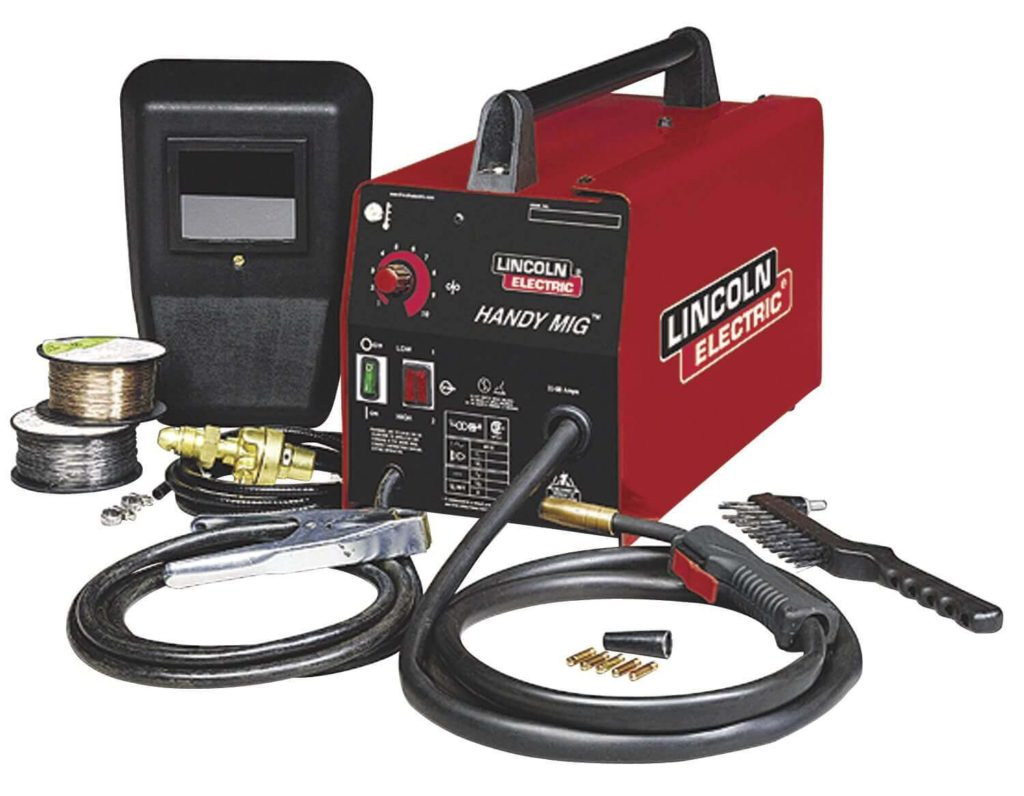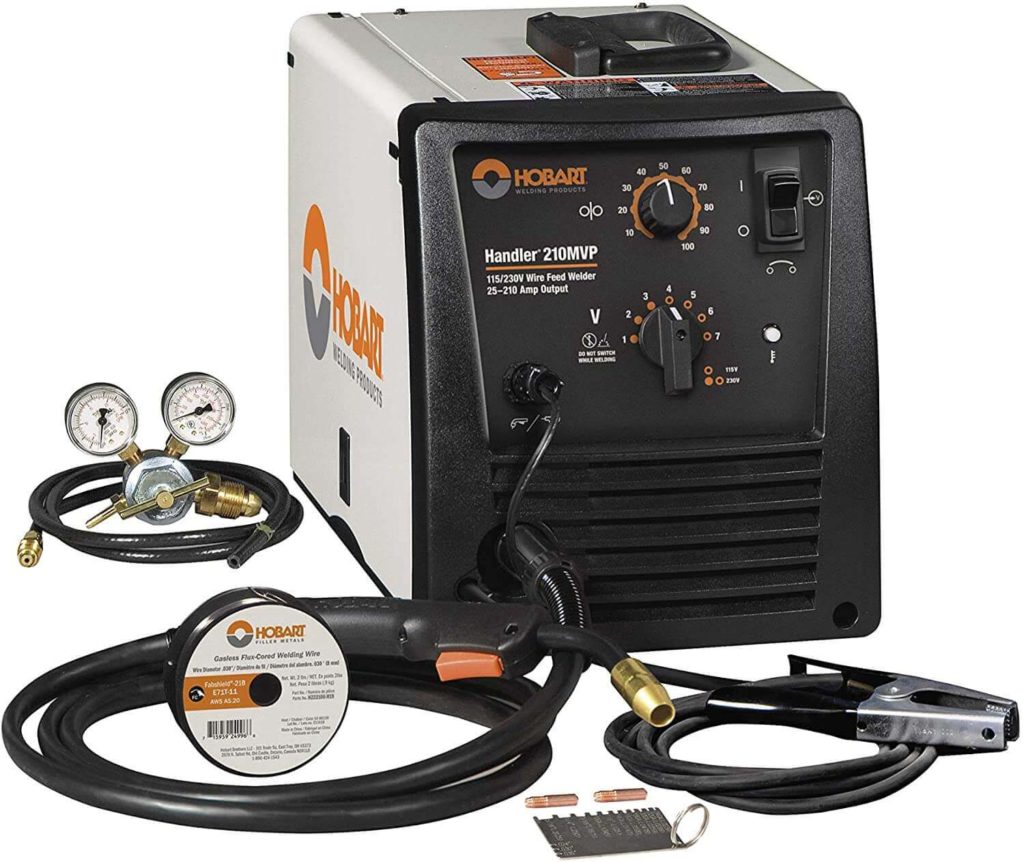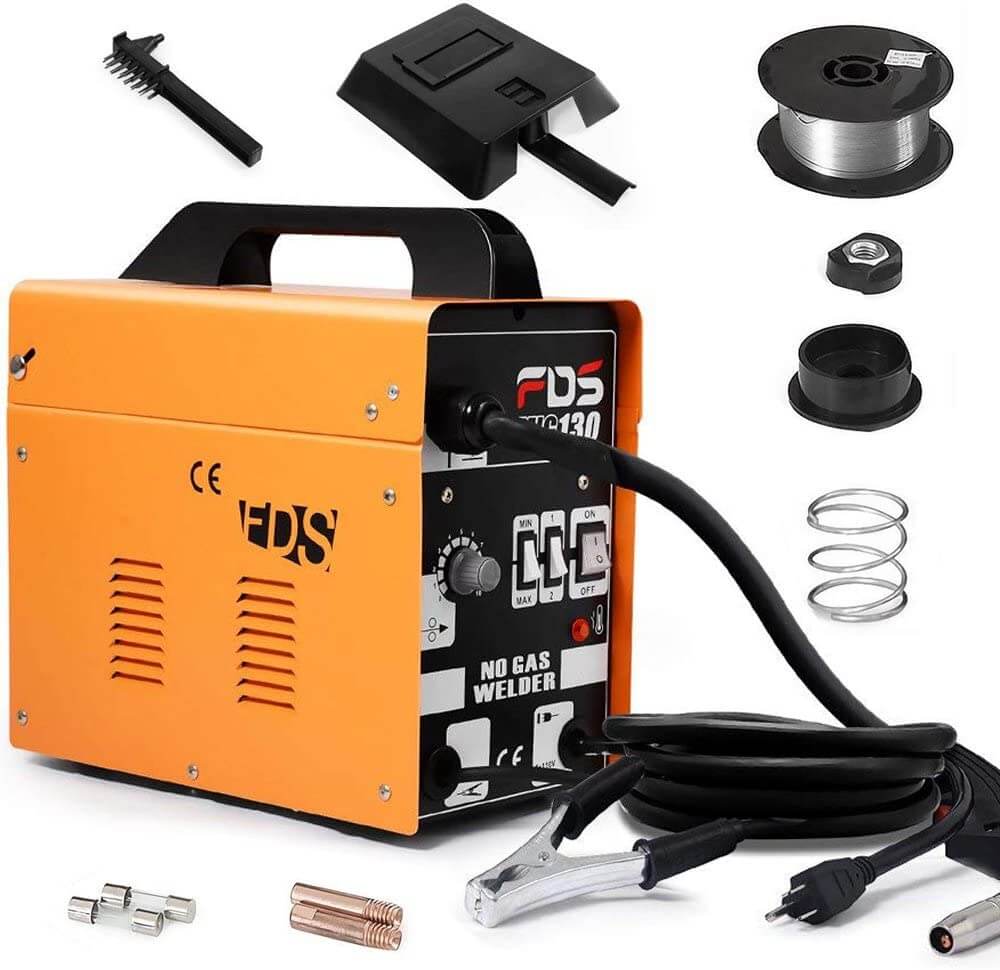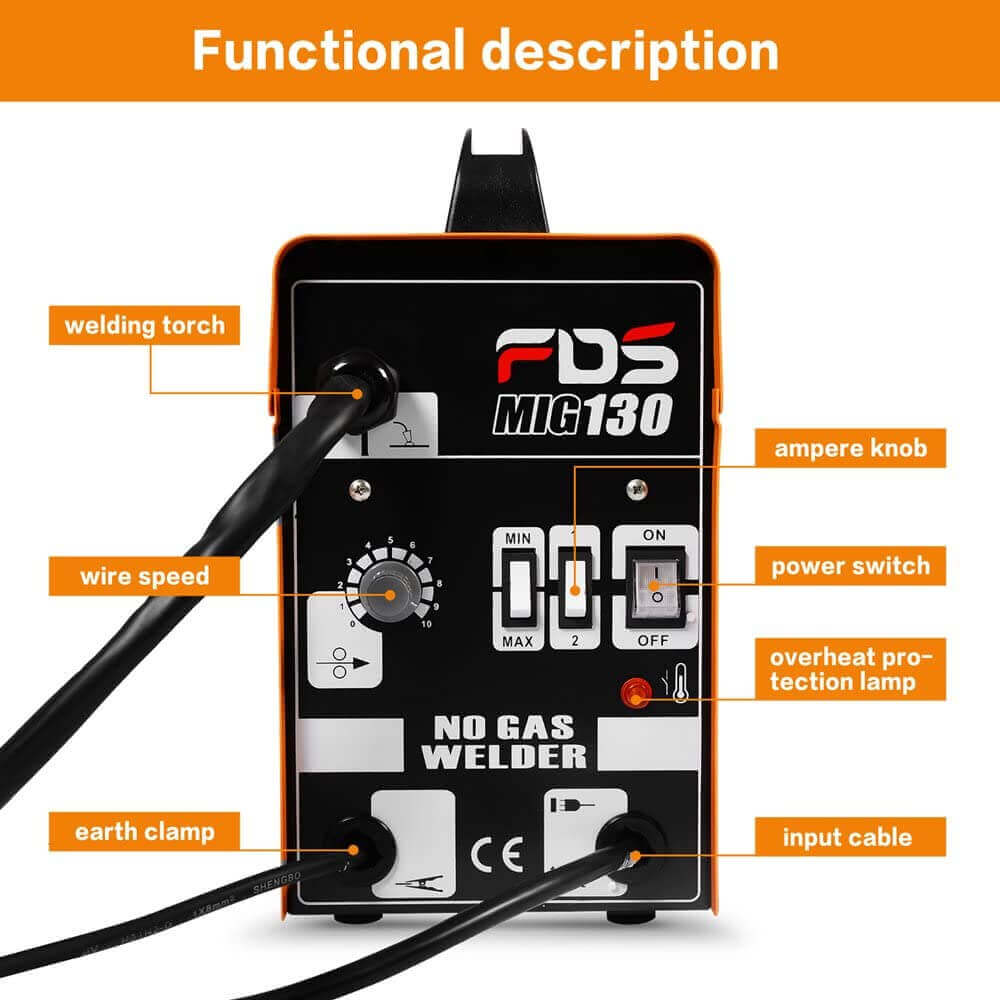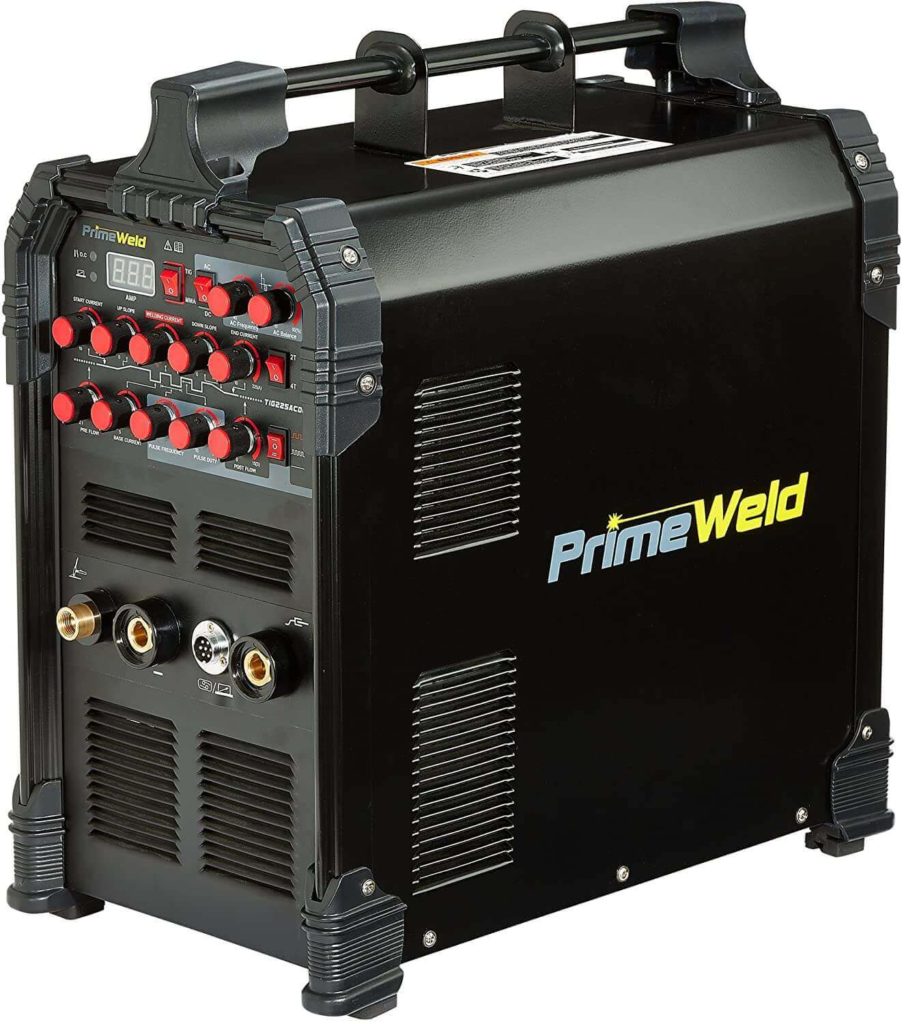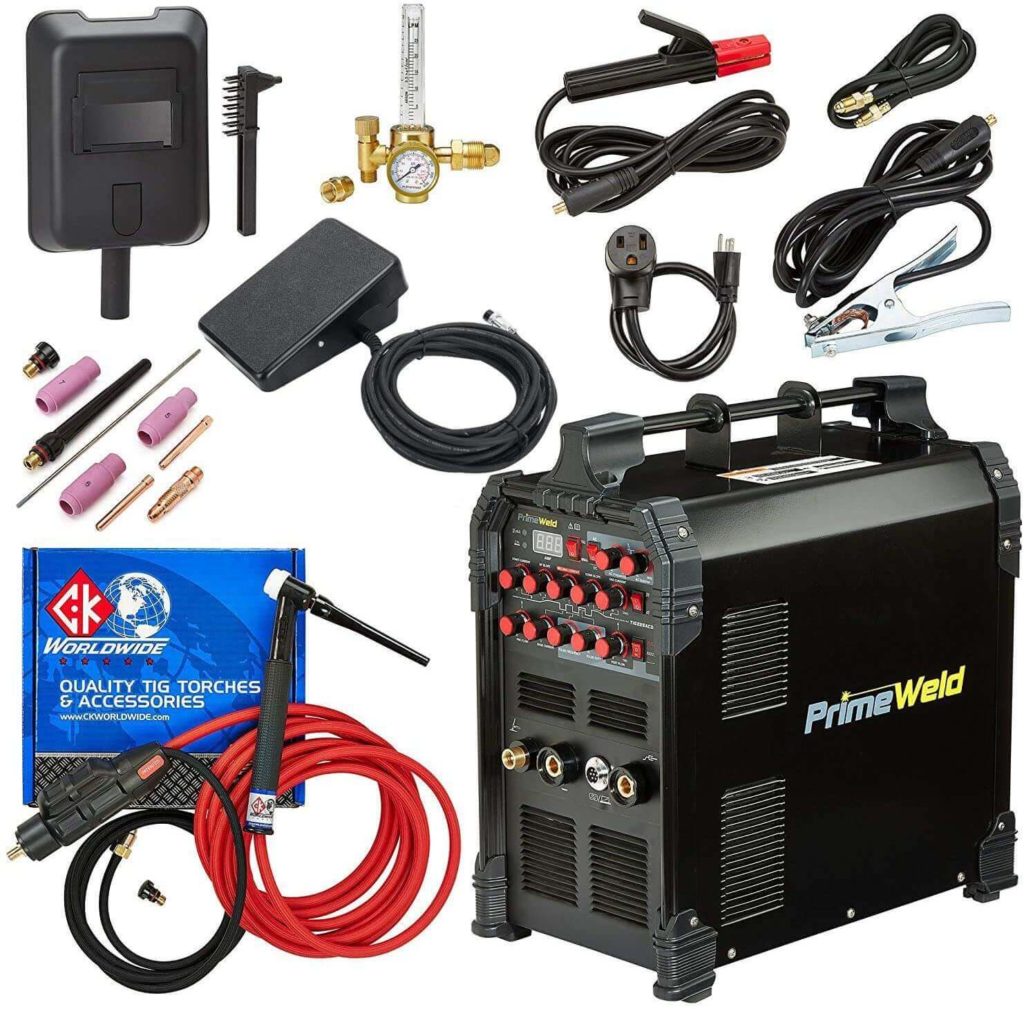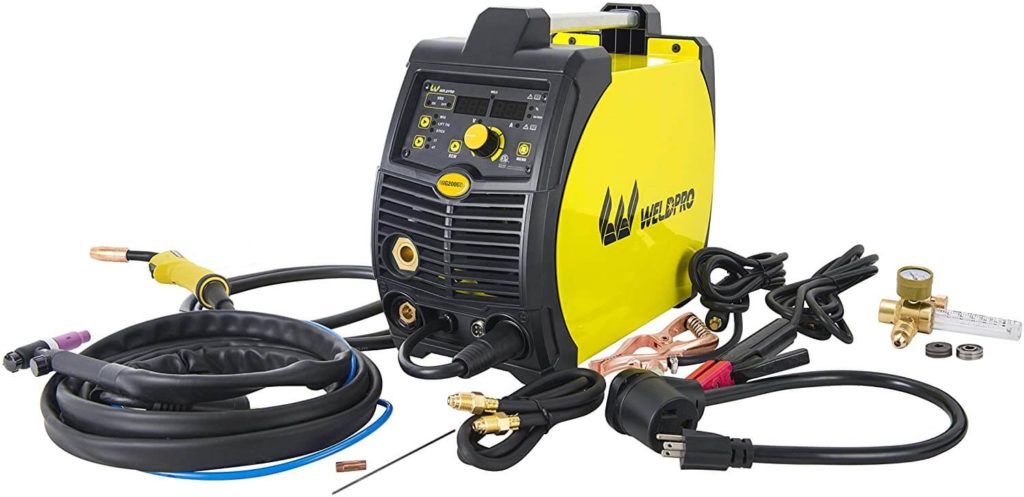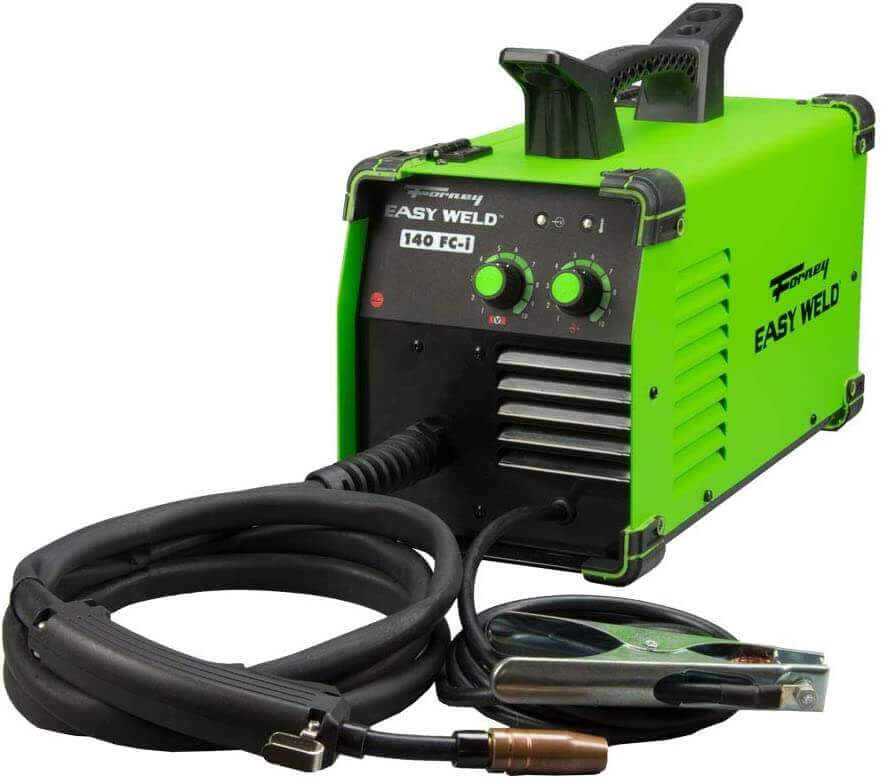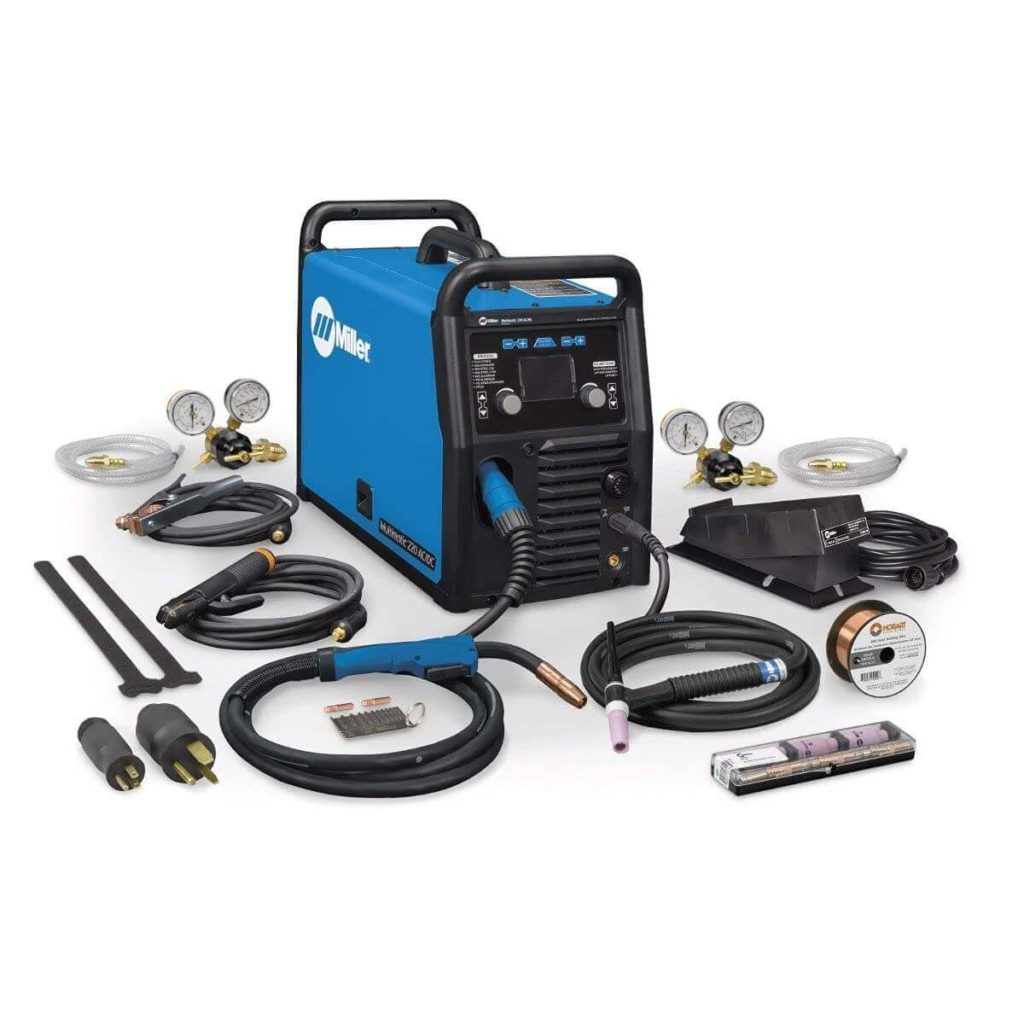This article will tell you about the best welder for auto body work.
Automotive workers must use a variety of welding techniques on the auto’s body to conduct repairs, maintenance, and restoration. They work on fenders, frames, exhausts, automobile panels, and wheels composed of a variety of metals, all of which require experts to employ different types of welders.
It’s difficult to find a single welder who can do all of the auto body repair operations. At the same time, you can’t afford to waste hundreds of dollars on a machine that can’t handle your automotive welding needs. So, I’m about to go through a few welders that are geared to aid you with day-to-day auto bodywork at home or in a shop.
With the essentials in mind, you can go on to more in-depth topics that will help you through the process of purchasing the best welder for auto body work.
Top 9 Best Welder for Auto Body Work
Without further ado, below is the list of best welders for auto body work.
- Miller Electric Millermatic 211 120/240 VAC
- Hobart Handler 140
- Lincoln K2185-1 MIG Welder
- Hobart Handler 210 MVP
- Goplus MIG 130 Welder
- PRIMEWELD TIG225X
- Weldpro 200 Amp Inverter Multi Process Welder
- Forney Easy Weld 261
- Miller Electric Multimatic 220
Best Welder for Auto Body Work Reviews
So go through this article to learn about the best welder for auto body work review.
MIG welders are without a doubt the equipment to consider, especially if auto body repair or maintenance work is on your mind. I’ve come up with a terrific name to share with you based on the power, build quality, and technical aspects.
1. Miller Electric Millermatic 211 120/240 VAC
Key Features:
- Weight: 0.010 ounces
- Material to weld: Steel, Stainless Steel and Aluminum
- Dimensions: 23.8 x 15.2 x 16.2 inches
- Item Thickness: 11 inches
- 10 ft. Work Cable with Clamp
Miller is best brand for welder production.
What sets the Millermatic 211 apart from the dozens of other welders on the market? Is it the Auto-Set feature, the inverter technology, or the unit’s overall usability?
Miller Electric Millermatic 211 model might not contain all of the most advanced features. Nonetheless, it is well worth your attention because it has the technical qualities that an auto body business need. That should be enough to persuade you to read what I’m about to say.
Constructing and Usability
Auto-Set gives you the convenience of pre-programmed controls for a gas/wire combo. A chart of custom parameters is located within the unit’s access door, which comes in handy if you need to work in manual mode.
You may use 120- or 240-volt receptacles with their Multi-voltage plug. Simply choose a plug that fits the power receptacle. The Smooth-Start function ensures a smooth and spatter-free start.
Miller Electric Millermatic 211 is configured to shut down if the duty cycle is exceeded or the airflow is obstructed, and a special LED is activated to signal that the temperature has beyond the safety limit. As the machine cools, the ‘thermal overload protection automatically resets.
A cooling system is in place to supplement the safety system, and it works on demand to reduce energy consumption, noise, and the presence of contaminants.
A cast-aluminium body houses the driving mechanism, which is equipped with a tension knob that is calibrated to provide consistent feeding. The drive roll, labelled Quick Select, features three grooves for the solid and flux-cored wire of various sizes.
This Miller Electric Millermatic 211 includes a clever system that detects if a conventional MIG gun or a spool gun is connected. The MDX-100 gun comes with the AccuLock MDX consumable system, which combines a front-loading liner with a dual-lock system to improve MIG wire feed ability.
Performance and Power
To deliver 115 Amps at 19.8 V with a 20% duty cycle, Miller Electric Millermatic 211 MIG welder requires 120 V at 24.3 A. It delivers 150 Amps at 21.5 V with a duty cycle of 40% using 240 V at 16.6 A as input power. The wire feed is 60–600 inches per minute, while the OCV remains at 54.
The thickness of the Material and Its Applications
You can weld three types of metals and their variants, such as aluminium, steel, and stainless steel, with Miller Electric Millermatic 211 MIG machine for the following applications.
- DIY and Metal Art Objects, Sculptures, and Light Fabrication
- Home, farm, auto body, and racing workshop repairs and maintenance (customization or restoration)
- Welding education and training institutions are among the other activities.
Steel thicknesses range from 24 gauge to 3/16-inch and aluminum thicknesses range from 18 gauge to 1/8-inch when using 120 V. Steel thicknesses range from 24 gauge to 3/8 inch when using 240 V, while aluminum thicknesses range from 18 gauge to 3/8 inch when using 240 V.
Pros
- It’s suitable for both newbies and experts
- Regardless of varied travel rates and arc lengths, inverter technology ensures a smooth arc
- Control and safety features that work
- Setup, use, and maintenance are all simple
- Portability is aided with two-way carry handles
Cons
- This is not the most cost-effective option
2. Hobart Handler 140
Key Features:
- Weight: 57 pounds
- Dimensions: 19 x 11 x 13 inches
- Material to weld: Steel, Stainless Steel and Aluminum
- 5 year limited warranty
- 5-position voltage control selector
The Hobart Handler 140 is neither a little nor a bulky device, weighing 57 pounds. While I wouldn’t compare Hobart 500559 to a high-end MIG welder, there are a few features of its build quality and service that are worth mentioning.
Constructing and Usability
The slanted and visible control panel provides a simple interface for users to make the necessary adjustments quickly and easily.
The more your control over the voltage output, the more likely you are to get a consistent arc. You may use this machine in five different positions.
Not only is the aluminum wire drive corrosion-resistant, but it is also thermally conductive. Its drive roll has three groves that can receive both flux-cored and solid wire. When using flux-cored or solid wire, you’ll need to pick between DCEP and DCEN, which is where the polarity settings come in handy.
This Hobart Handler 140 transformer is protected by the self-resetting ‘thermal overload protection mechanism, which cuts off the power supply in the case of an overload. The gas regulator does an excellent job of managing gas distribution. I’m afraid that’s all I have to say regarding the model’s build.
Performance and Power
This Hobart Handler 140 115 V welder runs at welding amperes ranging from 25 to 140 A and has an 18.5 VDC output of 90 Amps. Out of ten minutes, you can receive two minutes of operating duration (20% duty cycle). The maximum open-circuit voltage is 28 V.
The thickness of the Material and Its Applications
Small maintenance duties, auto body repair, applications at ranches or farms, metal art, sculptures, and other uses for the welder include welding mild, stainless steel, and aluminum with thicknesses ranging from 24 gauge to 1/4 inch.
Pros
- Budget-friendly and ideal for first-time buyers
- Multiple voltage control positions are available to ensure a steady arc
- With polarity changeover, it’s simple to set up
- Lightweight and moderately compact
- Warranty service support
Cons
- Welding stainless steel Poorly
Recommended Post: Best Arc Welder
3. Lincoln K2185-1 MIG Welder
Key Features:
- Dimensions:18 x 10.3 x 16.75 inches
- Weight: 26 Pounds
- Output Ampere: Amps 70
- Output: 115 Volts
Only mild steel may be welded with Lincoln K2185-1 MIG Welder. Despite this significant constraint, I think the device to be fairly useful for beginners and professionals who do not require a heavy-duty welding machine due to its high build quality and ease of use.
Constructing and Usability
A 115 V, 20 A power outlet is necessary to get this item up and running. You’re probably aware that this is a very typical occurrence in our homes. Any of the four voltage adjustment settings can be used. You can also change the wire feed system’s speed.
Until you hit the trigger, the ‘cold contactor’ keeps your wire electrically safe and chilly. The Lincoln K2185-1 MIG Welder contains a cooling fan to help it stay cool and last as long as possible.
Performance and Power
The Lincoln K2185-1 MIG Welder has a range of outputs from 35 to 88 amps, with a rated output of 70 amps at 17 volts. This welder, like most others at this price, delivers 20% of the duty cycle. The wire feed moves at a speed of 0-300 inches per minute.
The thickness of the Material and Its Applications
You can weld 24-gauge sheet metal up to 1/4 inch thick as long as your preference is for a small repair or DIY project at home and the metal used is mild steel. However, for the best results, you must utilize the right shielding gas and combinations.
Pros
- MIG welder for light fabrication tasks at a low cost
- A lightweight, space-saving unit with a compact design
- Wire-speed and voltage ranges that can be adjusted
- All components and accessories are included in a bundle that is very economical
- Arrangements for effective safety
Cons
- Aluminum and stainless steel cannot be welded together
4. Hobart Handler 210 MVP
Key Features:
- Weight: 79 pounds
- Multi-voltage plug
- 7 output voltage settings
- Dual-gauge regulator with gas hose
- Built-in gas solenoid
With the exception of a few MIG welders, I can’t think of many products that strike a good mix between value and price. Fortunately, I can provide a fantastic recommendation in this case: Hobart Handler 210 MVP.
Constructing and Usability
The multi-voltage plug, which is compatible with a standard 115 V or 230 V outlet, provides the unit’s dual-voltage functionality.
To have great control over the input parameters, you can use 11 voltage settings (7 for 230 V and 4 for 115 V). Hobart Handler 210 MVP ensures that the weld quality is up to par with minimum spatter. The wire feed also has limitless speed options to prevent Birdnesting, burnback, and poor penetration.
You may change the tension and thread new welding wire using a built-in wire feed system with a quick-release drive roll lever. The wire drive, which is composed of cast aluminum, is long-lasting. Up until you pull the trigger, a safety contactor keeps the wire cold (electrically, not literally).
For both types of wire, the drive roll has three grooves. Even when changing the polarity for tubular or solid wire, the transition has been made simple. The tip holder can be used to store your extra tips.
A standard circuitry is built in to make connecting to the spool gun simple and to give you complete control over its performance. The spool hub accommodates spools with diameters ranging from 4 to 8 inches, allowing you to select the right spool for the job.
Performance and Power
Hobart Handler 210 MVP provides variable amperage, power outputs, and duty cycles depending on the input power.
The amperage spans from 25 to 140 amps at 115 volts, generating 90 amps at 19 VDC rated output with 2 out of 10 minutes of duty cycle and an OCV of 28 volts.
The amperage spans from 25 to 210 amps at 230 V, generating 150 amps at 23 VDC rated output with 3 out of 10 minutes of duty cycle and a 34 VDC OCV.
At zero load, the wire feed runs at 40–680 inches per minute and 60–770 inches per minute.
The thickness of the Material and Its Application
Unlike some of the previous models, this one is suitable for building, repair, maintenance, restoration, agriculture, and residential applications. This Hobart Handler 210 MVP can handle any metal you want, even those used in MIG welding.
- Mild steel – 24 gauge to 3/8 inch (230 V); 24 gauge to 11 gauge (115 V) (using 75 percent Argon and 25 percent CO2)
- Mild steel – 18 gauge to 3/8 inch (230 V); 18 gauge to 11 gauge (115 V) (using 100 percent CO2)
- Mild steel – 18 gauge to 3/8 inch (230 V); 18 gauge to 1/4 inch (115 V) (using Flux Core)
- Stainless steel: 18 gauge to 1/4 inch (230 V); 18 gauge to 11 gauge (115 V) (using 90 percent Helium, 7.5 percent Argon, and 2.5 percent CO2)
- Aluminum — 18 gauge to 1/4 inch (230 V); 18 gauge to 11 gauge (115 V) (using 100 percent Argon)
Pros
- It’s a good deal for the money, especially for hobbyists and fabricators
- For controlled and smooth welding operations, a wide range of voltage and wire speed options are available
- A sufficient amount of electricity is available for most light-duty projects
- Overload protection with a self-resetting feature
- Excellent warranty assistance
Cons
- Heavy in weight
- To ensure good penetration into stainless steel, multiple passes are required
5. Goplus MIG 130 Welder
Key Features:
- Heavy-duty Stainless steel body
- Flux-Cored wire
- 4 Levels Adjustable Welding Speed
- Portable Design & Wide Applications
- 2 air vents on the machine
All of the MIG, TIG, and multiprocess welders in my list are cheaper than the Goplus MIG 130 Welder. But don’t dismiss it as a useless heap of the garbage immediately away. This equipment, I must agree, is not ready to assist you in a fabrication shop, much less in an industrial setting. Take a look at the price! I’m sure you won’t point the finger onto the maker.
Given that I discussed every type of welder for hobbyists and regular professionals (with the exception of those who operate underwater), I believe you should be familiar with at least one MIG welder that is best suited to the demands of a learner or an absolute novice.
Constructing and Usability
I’m sure you’d agree with me that for such a low price, settling for anything less than a stainless-steel body isn’t a bad idea. Then there’s the gorgeous yellow color, which I don’t think has much of an impact on its usability.
You’ll have four buttons to reduce and increase the current flow. The wire feeding speed can be adjusted up to 10 different levels using a rotary knob on the control panel.
Goplus MIG 130 Welder has a thermal safety system and a safety control component on the torch. A handful of air vents have been strategically placed to aid in heat dissipation and keep the overall temperature at a manageable level. Those who need to carry tiny accessories will like the storage compartment at the top of the box.
Performance and Power
The machine produces a maximum output of 105 Amps at 110 V input power, with a duty cycle of 15%. Its electrical function includes a 10 V circuit breaker and a 13V fuse. Oh, and the power wire is 72.5 inches long.
The thickness of the Material and Its Application
When you realize how much Goplus MIG 130 Welder can do, you’ll want to stick with thin iron and steel. As a result, you can use this machine for home or DIY projects that do not require a lot of maintenance.
The flux-cored wire used by Goplus 130 is a self-shielding component (metal inert gas) that helps avoid oxidation of the welded metal. Sheet metal with a thickness of 1/16′′ to 1/8′′ can be welded. Some folks said they could also handle a 1′′ thin square tube.
Pros
- For newbies who prefer the flux-cored method, this is an excellent entry-level machine
- It’s also great for do-it-yourselfers and hobbyists
- Housing that will last a long time thanks to the use of long-lasting paints
- Sheet metal is acceptable
- Lightweight and compact
- Power wire that is extra-long
Cons
- Due to the machine’s constantly charging electrode at the start, it’s prone to unintentional zaps
- Welding capabilities are extremely limited (both metals and processes)
Which TIG Welder Is Best For Auto Body Work?
TIG welding needs more work and skill than most other types of welding. It implies that the auto body equipment you purchase must be designed to provide the most exact welds while letting the operator work as efficiently as possible. One of those machines is the subject of my review.
Recommended Post: Best TIG Welder
6. PRIMEWELD TIG225X
Key Features:
- Weight: 90 pounds
- Dimensions: 24 x 19 x 12 inches
- 3-year warranty
- 225 Amps
- CK Dinse connector
- Advanced Inverter Technology
By all appearances, PRIMEWELD TIG225X Welder is a workhorse in an ideal atmosphere where metal manufacturing is a regular and primary activity. However, if the following details are not investigated before making a purchasing decision, one may feel as if they are getting the short end of the stick.
Constructing and Usability
If you need to ensure that the weld quality is better than average, you’ll need to have complete control over both the operation and the equipment. As you strike the arc, the ‘Pulse Width Modulation technology efficiently handles the width and depth of penetration, allowing you to tune arc characteristics to the desired specifications.
PRIMEWELD TIG225X Welder is beneficial to be able to choose how long to spend on each side of the unit’s AC cycle. Furthermore, the ‘AC Balance’ function allows you to clean the surface of your weld puddle of contaminants and oxidation, which is a must-see.
The DC mode, on the other hand, allows for low-temperature control while working with sheet metal and auto bodywork. Work on metal sculptures, bicycle frames, and other framework joints with this DC TIG.
Stick welding, because of its low-cost output due to the gasless operation, cannot be ignored as long as you are in the welding business. As a result, the Stick Mode is a big benefit.
Performance and Power
This PRIMEWELD TIG225X Welder employs normal ‘Inverter’ technology, with a high frequency (HF) start and ‘pulse width modulation’ to deliver a pulse ratio (10/90) ranging from 10 to 225 amps. Don’t you think there’s a lot of variation in the amperage settings?
Its flawless performance as a TIG welder is due to the 200 Hz pulse frequency. You’ll get the complete duty cycle at 108 A. (100 percent). It has a duty cycle of 40% when it reaches its rated power.
The thickness of the Material and Its Applications
Professionals can benefit from it as well if the applications are limited to water tanks, fences, street rods, bicycle frames, sculptures, sheet metal, and nearly any sort of exposed joint.
If you’re going to weld something, make sure it’s 1/4′′ thick for aluminum and 3/8′′ thick for mild steel. Welding 1/2′′ metal sheets is also doable in some cases, particularly if the metal is clean and prepared.
Pros
- Excellent value for money
- Power factor and duty cycle are excellent
- Designed specifically for sheet metal
- Stick mode allows for cost-effective welding without the need of shielding gas
- Housing that is tough and long-lasting
Cons
- Despite its small size, the unit is not lightweight
- Not suitable for welding stainless steel
What Is the Best Auto Body Multiprocess Welder?
Isn’t PRIMEWELD TIG225X Welder preferable to have a welding machine that can do TIG, MIG, and Stick welding all in one compact unit? Now I’ll discuss one of these models.
7. Weldpro 200 Amp Inverter Multi Process Welder
Key Features:
- Aluminum welding
- Optional spool gun
- Dual digital display
- Weight: 30.4 pounds
- Supply Voltage: 110v/240v 50/60 Hz
It’s what Weldpro refers to as their “flagship” model. Well, that may be true, but the unit’s pricing makes me curious about its features, which are far beyond those of a simple welder.
Constructing and Usability
In Weldpro 200 Amp Inverter Multi Process Welder TIG system includes a ‘true lift’ mechanism that eliminates the need for a foot pedal and a tool that is regarded as an important part of a TIG setup. For beginners, the spool gun makes aluminum welding and stick welding simple. Both MIG and flux-cored applications are possible with the MIG gun.
The ‘dual digital display’ allows you to view and control the wire speed and amperage accurately on many occasions where you may need to generate welds over and over. When the temperature increases too high, the Voltage Regulator-Down (VRD) system and the overload protection function activate with an indicator. You may also adjust the inductance.
Performance and Power
The amperage ranges are also customizable depending on your application because the equipment supports three different types of welding operations. Keep in mind that at 200 A, the unit may deliver up to 30% of the duty cycle.
- 230 V: MIG Welding: 40 A to 200 A, TIG Welding: 15 A to 200 A, and 40 A to 200 A (Stick Welding)
- 115 V: MIG Welding: 40 A to 120 A, TIG Welding: 15 A to 120 A, and 40 A to 120 A (Stick Welding)
The thickness of the Material and Its Applications
Material thickness, as well as wire sizes, vary depending on the process being performed, as does the unit’s power and performance.
- MIG Welding: 19 gauge to 0.197 inch (Thickness); 0.024, 0.031, and 0.039 inch (Thickness) (Wire Diameter)
- TIG Welding (Thickness): 25 gauge to 0.25 inch; 0.063 and 0.094 (Tungsten Needle)
- Stick Welding: 14 gauge to 0.315-inch thickness (thickness); 0.063 to 0.157-inch thickness (thickness) (Alkaline or Acid Electrode Diameter)
Pros
- A great option for hobbyists, DIYers, and professionals
- Switching from one technique to another is inexpensive and simple
- Wire-speed and amperage settings that respond quickly, with handy features like inductance adjustments
- TIG welding capability without the use of a foot pedal
- For a multiprocess unit, it’s incredibly small and light
Cons
- Incapable of handling some of the most typical metal thickness ranges (available at an auto body repair shop)
What Is The Best Welder For Auto Body Work On A Budget?
Some welders believe that a budget-friendly welder is essentially a low-cost welder. My research leads me to conclude that this isn’t the case. Now, I’d like to tell you about one such device that is incredibly inexpensive but performs better than a regular low-cost computer.
Recommended Post: Best Multi Processor Welder
8. Forney Easy Weld 261
Key Features:
- Integrated cable wrap
- Range up to 120V input, 140 AMP Output
- weight: 19 pounds
- Dimensions: 16.7 x 12 x 8.1 inches
- Metal
You could conclude that nothing about this welder appears to be flawless. However, in a practical sense, if your budget is a priority and your expectations are modest, Forney Easy Weld 261 MIG unit should not be overlooked.
Constructing and Usability
Any welding machine should have some level of control, especially over the wire speed and voltage. Forney Easy Weld 261 welder allows you to modify the voltage and wire speed indefinitely, allowing you to try to create a high-quality weld. You won’t have to spend extra for a foot pedal because one is included in the box.
The metallic case has a tough design that will last you far longer than a few months. The Forney 261 can handle rolls of welding wire weighing between 2 and 10 pounds.
The MIG gun and ground clamp are both 8 feet long, but I’m guessing you’d like them to be 10 feet long. The lightweight machine is easily carried thanks to an incorporated handle. You’ll also find the torch cable wrap beneficial if you’re moving around a lot on your Job site.
Performance and Power
Easy Weld 261 uses 120 V input power and outputs 140 Amps. Forney Easy Weld 261 has a duty cycle of 3 minutes or 30% when powered by 90 A. could you ask for anything more from a beginner welder?
The thickness of the Material and Its Application
Needless to say, MIG welders like this one aren’t suitable for all applications. This Forney Easy Weld 261 , however, can handle simple repair and maintenance, as well as hobby and DIY projects.
Though the machine is capable of using either.030″ or.035″, I recommend using.030″ for several reasons, including a longer duty cycle and high-quality results on mild steel with thicknesses ranging from 24 gauge to 1/4′′.
Pros
- For students and amateurs alike, this is the ideal companion
- For increased portability, the design is extremely compact
- Wire-speed and voltage can be controlled indefinitely
- Welding processes that are cost-effective (no shielding gas required)
- Simple to set up and maintain
Cons
- Capability requirements are extremely strict (only flux-cored process allowed)
Which AC Aluminum Welder Is Best for Auto Body Work?
The cleaning process is aided by the positive half-cycle provided by the AC current. A negative half-cycle is also provided to ensure penetration. As a result, a TIG welder with AC balancing control is advantageous. I’ve written evaluations for a couple of those computers, which you can find here.
9. Miller Electric Multimatic 220
The Multimatic 220 isn’t your typical multiprocess welder. If you asked me to propose budget-friendly all-in-one welding equipment, this would most likely be the one I would suggest.
I understand that the phrase “all-in-one” seems a little brash. Miller Electric Multimatic 220 shouldn’t be the case because the machine has more features than only an LCD display with an easy-to-use interface and the Lift-Arc or High-Frequency (HF) start.
Constructing and Usability
A multi-voltage plug, or MVP, attaches to any conventional 120 V or 240 V power outlet, and the unit features a 14-pin connector that allows the operator to pick from a variety of controls, including wireless foot or foot control and even fingertip control.
QuickTech, a proprietary technology, simplifies the setup process. Quick switching between two operations is possible with the foot control or the trigger. The required polarity is automatically determined by the machine.
Both the TIG torch and the MIG gun can be attached at the same time.
You won’t have to remember anything if you need to use the settings or modifications from the last welding procedure because the machine will do it for you.
The handle features a ‘Ball-and-socket’ design with a rear swivel that allows you to manoeuvre the MIG gun while reducing hand fatigue.
When your work comprises numerous processes and materials, the Auto-Set Elite option allows you to apply some established settings. You can also change the settings for each process (MIG, DC Stick, or AC/DC TIG) independently.
The Pro-Set option for Stick or TIG welding is ideal for those who want to work in manual mode. All you have to do now is tweak the settings until the Pro-Set appears on the digital display with a blue number.
With Pro-Set, you may regulate your cleaning action by up to 75% and the arc cone width on 120 Hz for AC TIG.
Pro-Set 100 Hz is recommended for DC TIG.
You should utilize Pro-Set at 30% for DC Stick, and the electrode for this purpose should be 7018.
- I’ll go over a few topics to show you how to alter the TIG welding settings
- The AC Balance can be adjusted up to 80%, with a starting point of 60%
- Starting at 60 Hz, the frequency can be modified up to 150 Hz
- The DC Pulse can be adjusted from ‘Off–150’ PPS (Pulses/Second) on the unit
- The Post-Flow for TIG welding can be set to ‘Auto–25 seconds’
The ‘angled wire drive’ is a dependable system. The three grooves on the driving roll (named Quick Select) allow you to adjust the wire diameter or type (flux-core or solid) as needed. Both TIG and MIG shielding gases have their own unique gas connections.
The unique AccuLock MDX system on the MIG gun uses a dual-locked liner that loads on the front to create a perfect path for the wire feed and optimize feed capabilities.
Performance and Power
This Miller Electric Multimatic 220 welder delivers amperage in the range of 30 A to 125 A while using constant voltage in MIG welding or Flux-cored processes where the input power is 120 V, and the rated output stays 105 Amps at 19.2 V with a 60 percent duty cycle.
The amperage spans from 30 to 230 A at 240 V, with a rated output of 200 Amps at 24.5 V and a duty cycle of 20%. When the rated output is reduced to 170 Amps at 21.5 V, the duty cycle doubles. The wire feed speed is 60–600 inches per minute, and the OCV can reach 45 VDC.
When TIG welding with constant current, the input power is 120 V, and the rated output is 130 Amps at 15.2 V with a 40% duty cycle, it delivers amperage in the range of 20 A to 140 A. The amperage ranges from 20 to 210 A at 240 V, with a rated output of 210 Amps at 23.6 V and a duty cycle of 2 out of 10 minutes.
Stick welding with constant current delivers amperage in the range of 30 A to 90 A, and the rated output stays 90 Amps at 23.6 V with a 40% duty cycle when the input power is 120 V. The amperage ranges from 30 to 200 amps at 240 volts, with a rated output of 200 amps at 28.4 volts with a 15% duty cycle. The OCV rises to 46 VDC for both TIG and Stick welding.
Thickness Of The Material And Its Application
The most common applications are auto body restoration, repair, and maintenance. However, in other sectors, such as light fabrication, farming, and household projects, you’ll have more flexibility and ease.
- 24 gauge to 3/8 inch (steel) and 18 gauge to 3/8 inch (aluminum) MIG welding (aluminum)
- TIG Welding: 24 gauge to 1/4 inch TIG Welding: 24 gauge to 1/4 inch TIG Welding: (aluminum and steel)
- 16 gauge to 3/8 inch DC Stick Welding (steel)
Pros
- It has five welding processes and can deliver high amperage ranges with a duty cycle of up to 60%
- Ideal for metal fabricators and welders that require versatility in their applications
- The ergonomic, over-moulded carry handle ensures great grip and portability, despite the fact that it is not the lightest of all welders
- TIG adjustability has been given more attention
- For more ease in various welding situations, QuickTech and Auto-Set Elite are available
- All high-quality components and accessories are included in one entire kit
Cons
- Expensive for hobbyists and DIY peoples
Recommended Post: Longevity TIG 200SX Welder Reviews
Buyer’s Guide
Consider the following as a buyer’s guide for the best welder for auto body work.
Because a welding machine isn’t like a small piece of equipment, you should do your homework and study as much as you can before settling on a model.
So, if you understand the aforementioned points, I believe the reviews above will make perfect sense to you. What’s more, you’ll be surprised to learn that So, here’s my guide to finding the best auto body welder.
Amperage
An electrical conductor’s amperage is the quantity of electricity that passes through it in a second. It’s referred to as ‘contemporary’ by certain males.
As we continue to discuss this vital component, you should be aware that we’ll go over a number of data that will assist you in determining how much amperage you’ll need to weld metals of various thicknesses.
A 115 V MIG welder capable of producing 140 A can weld up to 1/4-inch steel. A 220 V welder capable of outputting 200 A can weld up to 1/2-inch steel. I understand that these figures appear to solve your problem, but you need to know more if you want to live in an ideal environment.
I have a rule for you when it comes to TIG welding. Make a mental note of the following: For every thousandth of an inch of metal thickness, 1 amp is required. You’ll need about 125 amps to weld 1/8-inch material, for example. For thicker materials, such as 3/8-inch, you may need to make extra changes, such as 280 Amps.
Stick Welding is a relatively straightforward calculation. The majority of applications require no more than 200 amps, so any type producing between 225 and 300 amps would suffice.
If you remember these numbers, you can handle up to 3/8-inch metal in many passes. With your expertise and skills on the job, you might be able to weld up to 1 inch. I guarantee you that is not a joke.
Heat Transfer Mechanism
Weld penetration is influenced by the heat content of the metal droplets delivered during welding. These drops also have an impact on the weld pool, which is made up of liquid metal. The impact determines the depth of penetration.
The size of the weld bead and the pace at which it solidifies are both affected by this mechanism. It’s also linked to the metallurgical structure, deformation, and qualities of the finished product.
It’s okay if you don’t find it as interesting as the other parts of my presentation. I put it here in case you, like so many others, have any questions.
Not Included Features
When choosing welding equipment for an auto body project, the amperage or power of the machine isn’t the only consideration. Any MIG/TIG/Stick or multiprocess welder must possess specific characteristics in order to be suitable for common automotive or fabrication operations.
I like to start with safety features like thermal overload, cooling system, and safety contactor. Things like voltage settings, ‘wire feed speed’ alterations, spool gun assembly, gas hookup, and so on spring to mind when it comes to ease of use.
Smart features will always be advantageous, regardless of the brand or model you purchase. Automatic or manual parameter selection, digital display for precise reading, LED indicators, and other features are now standard.
In the Auto Body Industry, What Kind of Welder is Used?
A MIG welder exceeds the competition in several ways. Although precision may be compromised, the key advantages are the convenience of use, a clean weld, and speed of operation.
A MIG welder is ideal for most auto bodywork because of its ability to handle a wide range of metals and thickness ranges. If you do some quick repairs or maintenance, you won’t have to sacrifice the welds’ clean appearance or strength.
Conclusion
Here comes an end to the extensive reviews of the best welders for auto body work.
The PRIMEWELD TIG225X is the best TIG welding machine on this list due to its inexpensive price and user-friendly features. I emphasize usability because a challenging job like TIG welding needs a lot of it.
You may have seen better multiprocess welders than the Weldpro 200 Amp Inverter Multi-Process Welder. What’s more, you’ll be surprised to learn that I did the same thing. But none of them manages to strike such a good price-to-value ratio as this one.
Although I believe the Goplus MIG 130 Welder is the best value for money, the Forney Easy Weld 261, with its 140 Amps of output power, clearly outperforms it.
Finally, I’d like to call attention to the Miller Electric Multimatic 220 and Hobart 210 MVP, which offer the right combination of power and features. The prices of these flats, on the other hand, may entice you to search elsewhere.
I’ve tried to be thoughtful and honest in my reviews so you don’t end up paying for a useless welder. I understand if you have any further queries for me. Could you please send me an email? It would be a joy for me to serve you in any manner possible.
Frequently Asked Questions (FAQs)
Now is the time to address some of the most common issues I’ve received from people looking for a welder for auto body work.

With 8 years of experience a senior welding instructor and safety equipment researcher and writes articles, reviews and guidelines on helmets and other welding and safety gears at Welder Choice, and other written works have been published in various publications.
